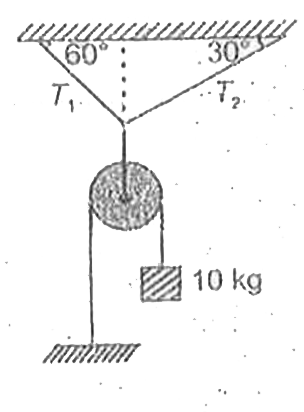The systems shown in are in equilibrium if the spring balance is calibrated in newtons, what does it record in each case? (g=10m/s2)
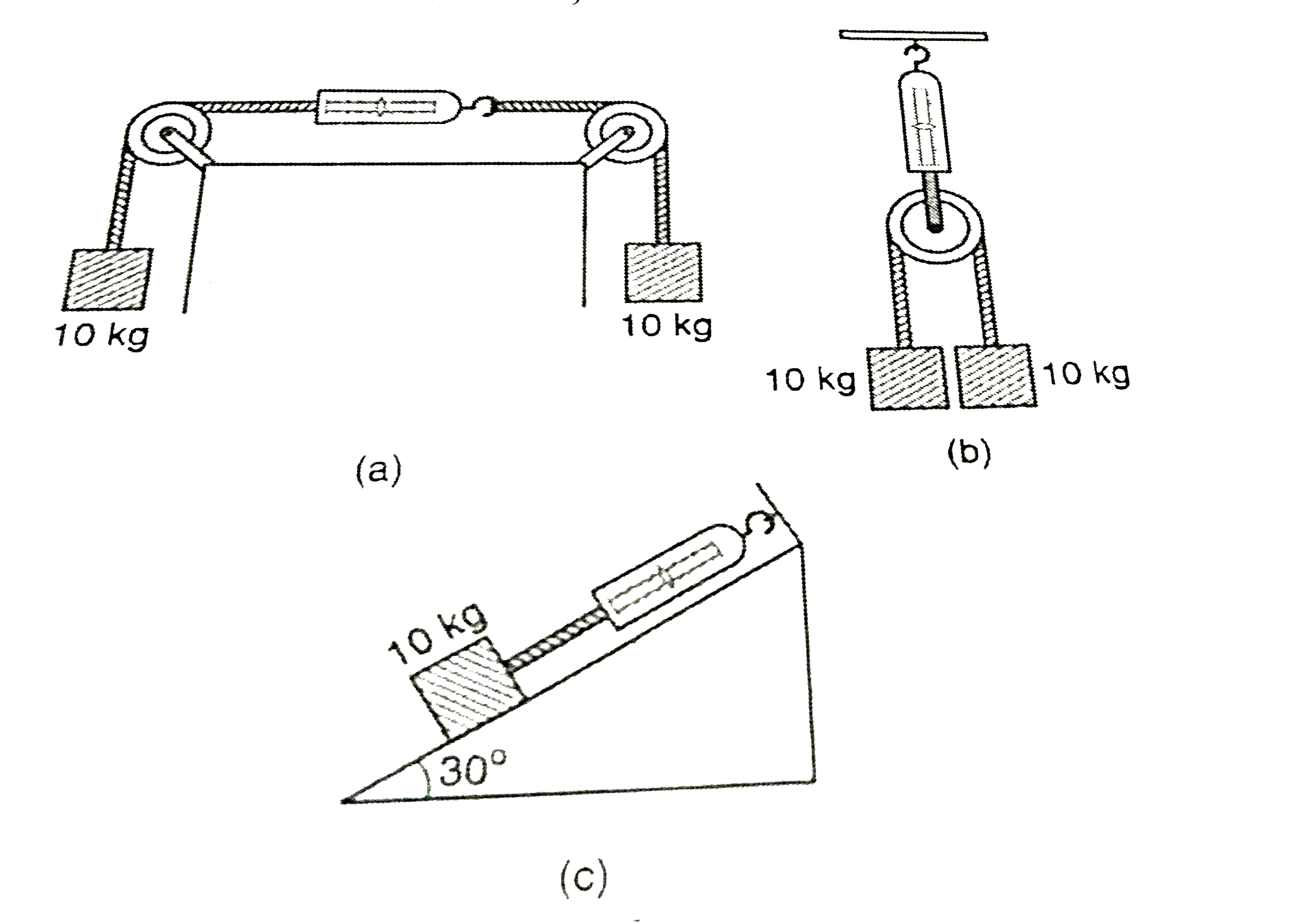
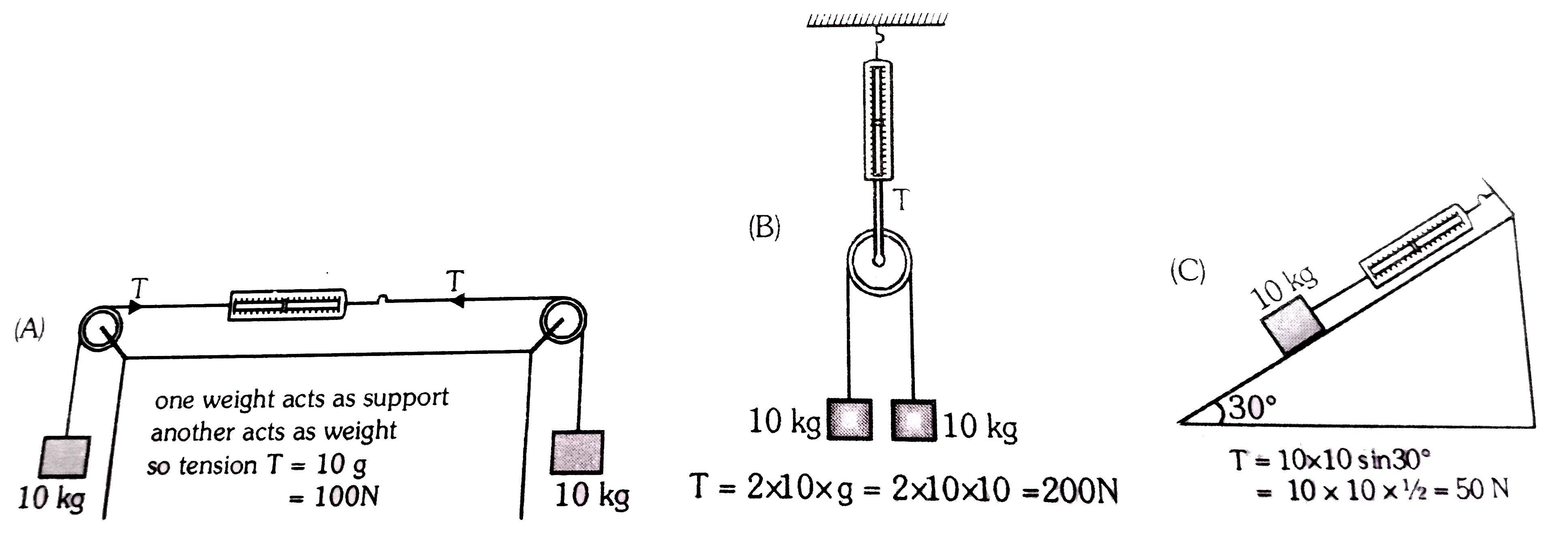
T=2×10×g=2×10×10=200N
Topper's Solved these Questions
- NEWTONS LAWS OF MOTIONBOOK - ALLENCHAPTER - NEWTONS LAWS OF MOTIONEXERCISE - SWOE
44 Videos
- NEWTONS LAWS OF MOTIONBOOK - ALLENCHAPTER - NEWTONS LAWS OF MOTIONEXERCISE - EXERCISE-I
52 Videos
- NEWTON'S LAWS OF MOTION & FRICTIONBOOK - ALLENCHAPTER - NEWTON'S LAWS OF MOTION & FRICTIONEXERCISE - EXERCISE (JA)
4 Videos
- RACEBOOK - ALLENCHAPTER - RACEEXERCISE - Basic Maths (Wave Motion & Dopplers Effect) (Stationary waves & doppler effect, beats)
25 Videos
Similar Questions
Knowledge Check
Two block of mass 2kg are connected by a massless ideal spring of spring constant K=10N/m . The upper block is suspended from roof by a light string A . The system shown is in equilibrium. The string A is now cut, the acceleration of upper block just after the string A is cut will be (g=10m/s2 .
 A0m/s2B10m/s2C15m/s2D20m/s2
A0m/s2B10m/s2C15m/s2D20m/s2In the systems shown in figure (A), (B), (C) and (D), the scales of the springs are calibrated in newton
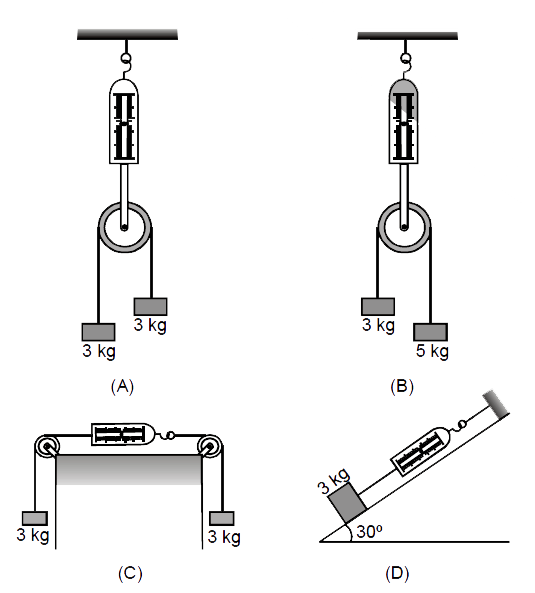
Assume that
Pulleys are massless and frictionless
Strings are massless
The surface in figure (D) is frictionless
Reading of the spring scale in figure (D) isA30 NB45 NC15 ND22.5 NIn the systems shown in figure (A), (B), (C) and (D), the scales of the springs are calibrated in newton
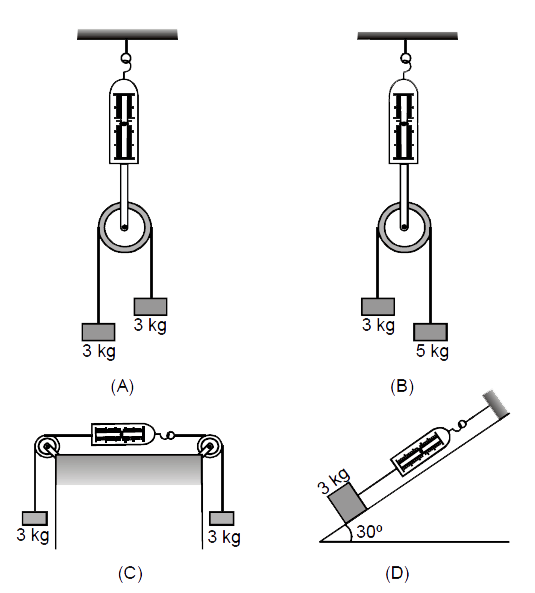
Assume that
Pulleys are massless and frictionless
Strings are massless
The surface in figure (D) is frictionless
Reading of the spring scale in figure (C) isA30 NB45 NC15 ND22.5 N
2 kg box rests on a frictionless of angle 30∘ supported by a spring. The spring stretches by 3cm
(a) Find the force constant of the spring
(b) if the box is pulled down the incline 5 cm from its equilibrium position and released what will be its initial acceleration? (g=10m/s2)
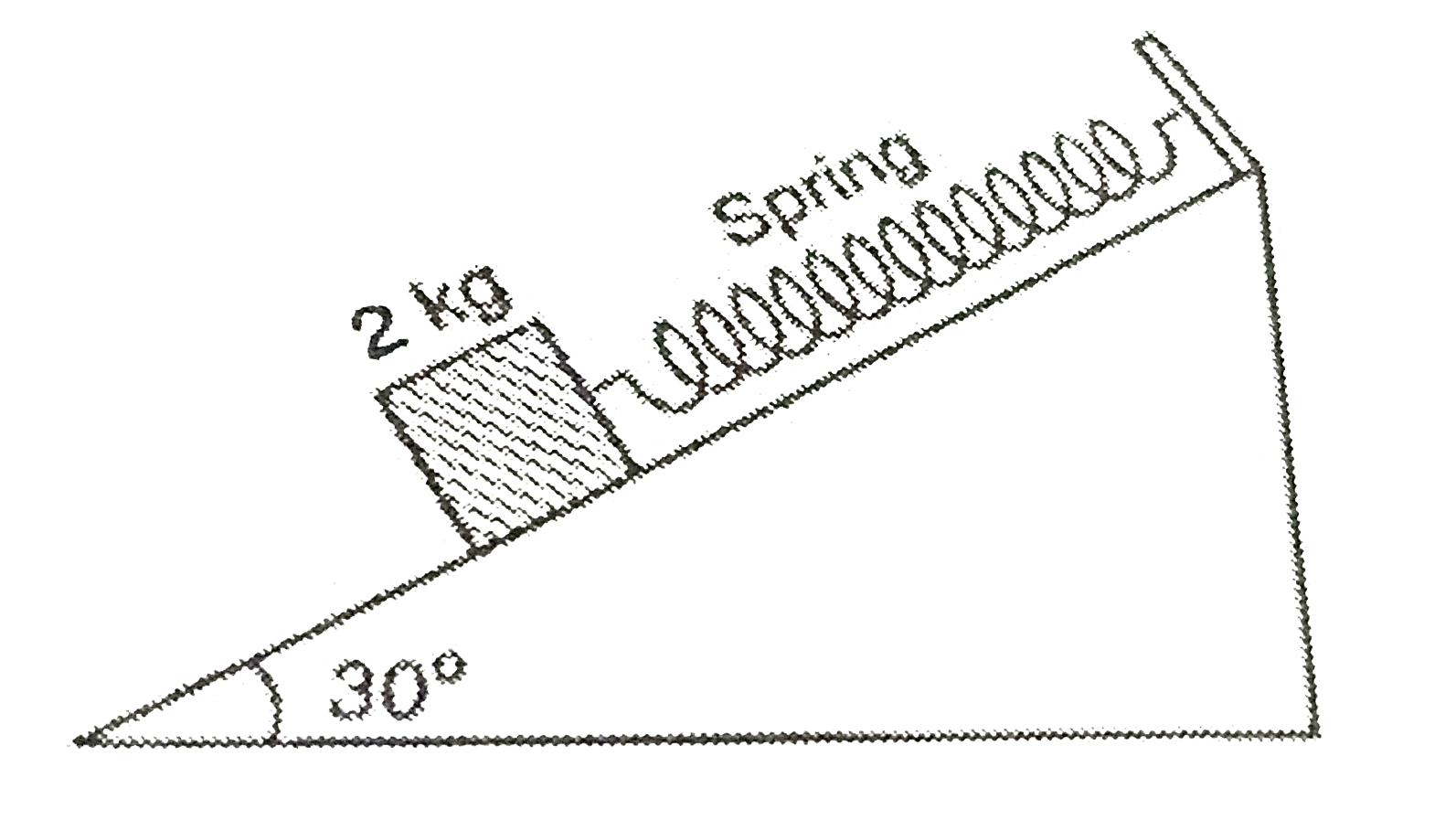
View SolutionMention the magnitude and direction of the net force each case. (Take g=10 m s−2)

View SolutionMention the magnitude and direction of the net force each case. (Take g=10 m s−2)

View SolutionIn the systems shown in figure (A), (B), (C) and (D), the scales of the springs are calibrated in newton
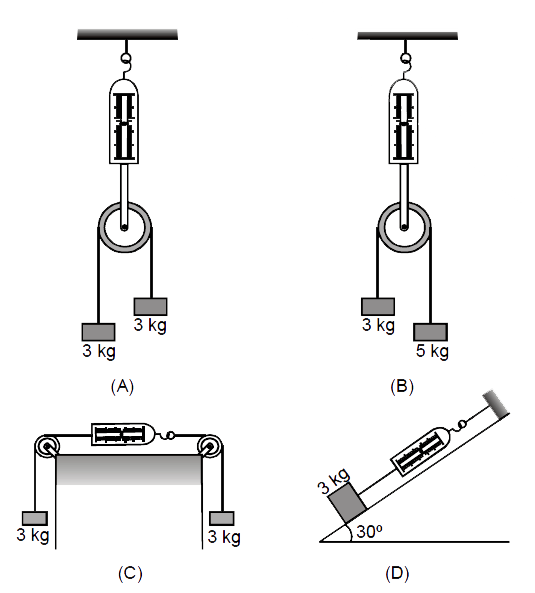
Assume that
Pulleys are massless and frictionless
Strings are massless
The surface in figure (D) is frictionless
Reading of the spring scale in figure (A) is
View SolutionIn the systems shown in figure (A), (B), (C) and (D), the scales of the springs are calibrated in newton
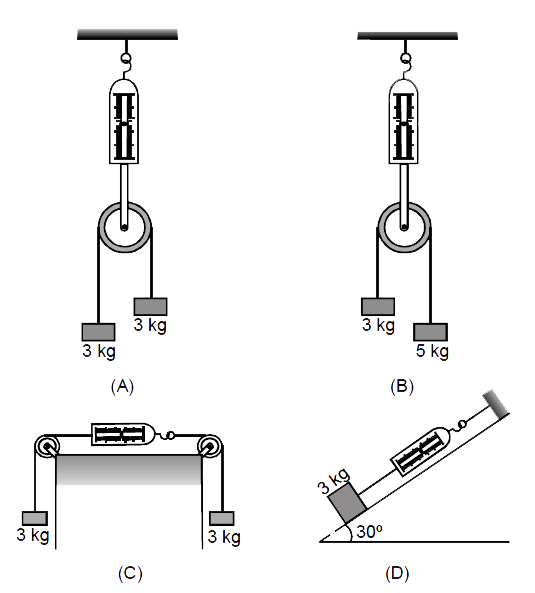
Assume that
Pulleys are massless and frictionless
Strings are massless
The surface in figure (D) is frictionless
Reading of the spring scale in figure (B) is
View Solution


